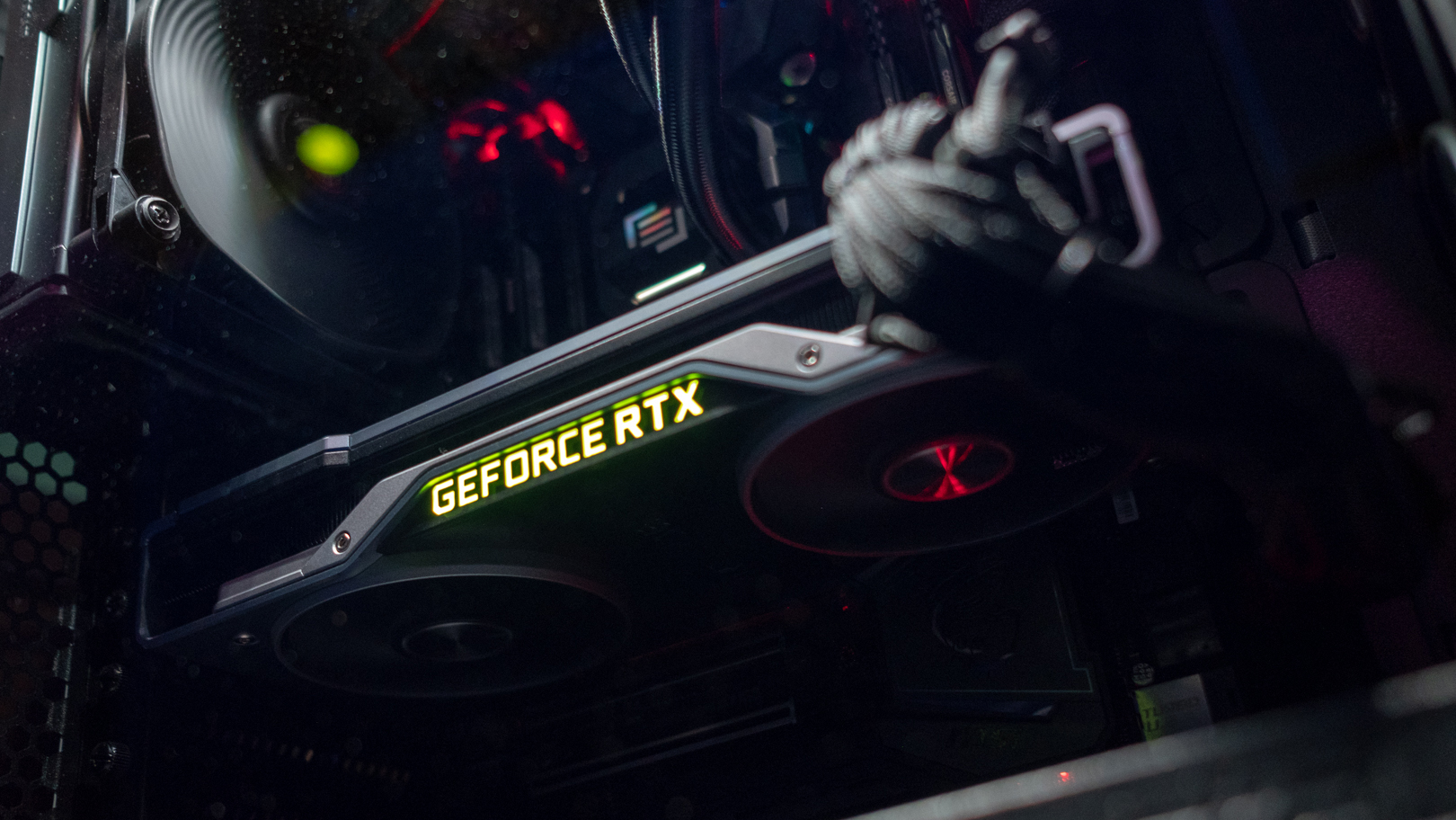Nvidia’s new ultra-low latency mode for GPUs beats AMD’s Radeon Anti-Lag feature
GeForce has the edge, or it seems that way looking at Nvidia’s own benchmarks

To coincide with Gamescom 2019, Nvidia has introduced a graphics driver that comes with new technology to take on AMD’s Radeon Anti-Lag for more responsive gaming – alongside a serious boost in frame-rates for some games.
Nvidia’s Gamescom Game Ready Driver (436.02) adds an ultra-low latency option which enables ‘just in time’ frame scheduling.
- GeForce RTX 2060 Super vs RTX 2060: how much has changed?
- Should I buy a GeForce RTX 2070 Super?
- Find the best Nvidia GPU for you
When you’re playing a game, Nvidia’s driver previously buffered a frame – or up to a few frames – in a render queue, to help smooth over any potential frame-rate glitches if the GPU suddenly gets overloaded with a busy scene. The downside to this is that it introduces a little input latency.
With the new ultra setting for the low latency mode, the next frame is only submitted ‘just in time’ for the graphics card to receive it and start rendering.
This cuts down any potential latency to a minimum, so in other words, any lag between a mouse or keyboard input actually happening on the monitor is reduced.
Thus your in-game actions are more responsive, and although the time difference may be a relatively small matter of milliseconds, you can feel the difference, particularly in the likes of a fast-paced shooter where fractions of a second can be the difference between life or death.
AMD’s equivalent is Radeon Anti-Lag, which was introduced recently in July, so this is effectively Nvidia’s answer to the rival tech.
Get daily insight, inspiration and deals in your inbox
Sign up for breaking news, reviews, opinion, top tech deals, and more.
Nvidia claims the new setting makes quite a difference in some games, and for example in Apex Legends, it reduces graphics latency from 29/30ms with low latency on and off, respectively, to 19ms with ultra-low.
The Division 2 presents the most startling difference, with latency of 49ms/33ms, dropping to 22ms with ultra-low being used. A difference of 27ms will likely be at least somewhat noticeable to most gamers, although that seems an extreme case.
With Radeon Anti-Lag, AMD claimed an improvement in response times of up to 31%, which would seem to roughly correlate (on average) with the benchmarks Nvidia provided here, although in the more extreme cases, Nvidia is claiming over 50% victories. So that makes it seem like Nvidia could possibly just have the edge here, although further (more direct) testing would be needed to fully draw that conclusion, of course.
Nvidia’s feature is still officially in beta, however, so you may see slightly wonky results for the time being. And just as with Radeon Anti-Lag, it only works with DX9 and DX11 games, as in DX12 or Vulkan titles, the game makes the decision regarding queuing frames, not the graphics driver.
It’s also worth noting that Nvidia observes that low latency modes have the greatest impact when a game is GPU (rather than CPU) bound, and is running with frame-rates of between 60 to 100 frames per second.
Legendary boosts
As well as this latency wizardry, with the new driver, Nvidia is boasting that some popular games will benefit from frame-rate boosts of up to 23%.
That headline 23.4% increase occurred with Apex Legends at 1080p resolution with the GeForce RTX 2080 Super graphics card. The RTX 2070 Super and RTX 2060 Super witnessed slightly more modest gains at 16.9% and 15.5% respectively, but they’re obviously still impressive strides forward.
The RTX 2060 Super got the biggest boosts of all RTX models with Forza Horizon 4, though, with a 17.1% increase at 1080p, and 17.6% at 1440p.
There are worthwhile gains here for Battlefield V, Strange Brigade and World War Z as well, all of which are detailed by Nvidia’s own benchmarking in its post introducing the fresh Game Ready Driver.
That post also provides instructions on how to turn on the new ultra-low latency mode, which you will find in the Nvidia Control Panel, under Manage 3D Settings. Global Settings will implement your choice across all games, but you can use Program Settings to change the mode for individual games, should you wish to use ultra-low in some but not others.
Also worth noting in this driver release is the introduction of GPU Integer Scaling, which makes for sharper upscaling in pixel art games like Hotline Miami and Terarria, to ensure that they look suitably crisp rather than blurry on higher-resolution monitors.
Nvidia explains that this innovation comes courtesy of a hardware-accelerated programmable scaling filter available in Turing graphics cards.
Finally, Nvidia has introduced a new ‘sharpen’ Freestyle filter which is better than the previous ‘detail’ filter, offering a higher image quality with considerably more crispness, plus it exacts much less of a performance hit, too.
- These are the best graphics cards you can buy in 2019
Darren is a freelancer writing news and features for TechRadar (and occasionally T3) across a broad range of computing topics including CPUs, GPUs, various other hardware, VPNs, antivirus and more. He has written about tech for the best part of three decades, and writes books in his spare time (his debut novel - 'I Know What You Did Last Supper' - was published by Hachette UK in 2013).